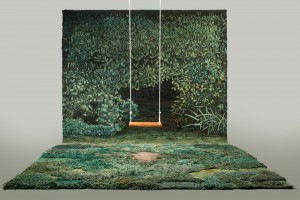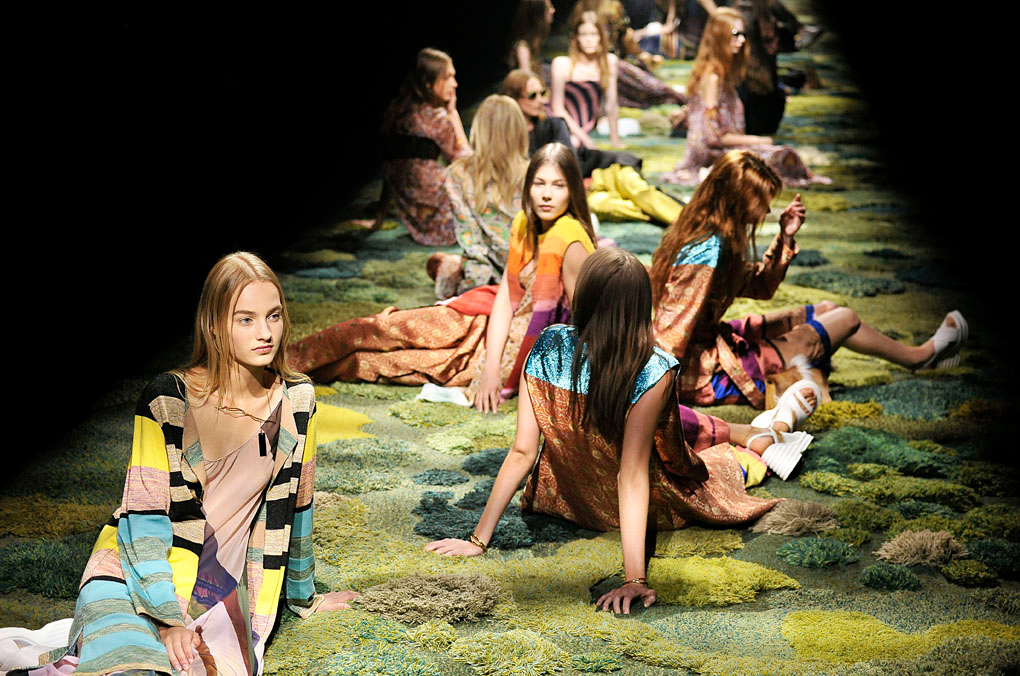As I wrote in an earlier post when I started this blog on rugs, carpets and tapestries back in 2009, A few months ago I decided to learn something about a subject that had always interested me but remained unexplored. I say unexplored because in some ways this can be compared, I think, with traveling to a part of the world you’ve always wanted to see but couldn’t afford. Since then I have had the pleasure of writing more than fifty articles on fascinating (to me) aspects of rugs, carpets and tapestries; none of these discoveries brought me more pleasure than that of my most recent, the rug art of Alexandra Kehayoglou.
I stumbled onto her work (don’t you think “stumbled” a great word for a rug discovery?) via an article in the New York Times. The article described her work as resembling “a mossy forest path…twice the length of a tennis court…” The setting, a runway during Paris Fashion Week graced by a dozen or more lovely young women in colorful dresses.
What appeals and fascinates me about her artistry–besides the beauty of her creations–is that they are the first I’ve been able to find where the rug was the media and the message. There are any number of beautiful rugs with the works of great artists like Picasso and Klee imposed on them; and textile art is all around us, but The Rug Art of Alexandra Kehayoglou is the only art I’ve found where the rug, carpet or tapestry is so rooted in the work as to create the symbiotic relationship first described by Marshall McLuhan. Her beautiful room-sized work Refuge For A Memory is a perfect example: The rug and the wall hanging are not only textiles in this context, they are central to the message of comfort, safety and childhood pleasure. More, they deliver the message of grounded refuge as no tile, grass or wooden floor ever could.
The rug and the wall hanging are not only textiles in this context, they are central to the message of comfort, safety and childhood pleasure. More, they deliver the message of grounded refuge as no tile, grass or wooden floor ever could.
Alexandra Kehayoglou is an Argentinian. Her grandparents, of Greek origin, came from Turkey after the first world war. Today her family owns one of South America’s largest carpet companies.

